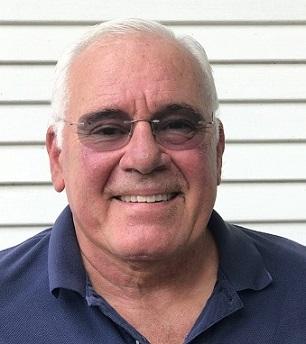-
About
-
Academics
- Physician Assistant
- Special Master’s (MBS)
-
Admissions & Financial Aid
- Tuition & Fees
-
Student Life
-
Research
- Research Labs & Centers
-
Local & Global Engagement
- Global Health Program
On the Rise: IRA Charitable Distributions
Tax-savvy donors are using their IRAs to make impactful gifts.

Many Tufts alumni and friends are tapping their IRA assets to meet their philanthropic goals. Beginning at age 70 ½, American taxpayers must take an annual “required minimum distribution” (RMD) from their retirement savings, distributions that count as taxable income. But if a taxpayer doesn’t need or want the income, she can instead donate it to a public charity like Tufts. Introduced in 2006 and made permanent in 2015, the gift option allows individuals 70 ½ or older to transfer up to $100,000 annually from their IRAs to charity, tax-free.
It’s an attractive option that’s having a big impact at Tufts. The university has received more than $12 million in gifts since this option first became available. And between 2017 and 2018 alone, such gifts to Tufts doubled. With fewer people itemizing their deductions as a result of tax reform that increased standard deductions, this gift strategy is proving popular; donors can receive a tax break from giving even if they are not itemizing.
IRA Charitable Distributions are funding school-wide priorities, including the annual fund, financial aid, faculty support, and research. As another benefit, each gift is also counted towards each school’s goals for Brighter World: The Campaign for Tufts.
“Ever since the provision was introduced, medical school alumni and friends have let us know that they find IRA Charitable Distributions to be a fantastic and easy way to make a tax efficient gift,” said Rebecca Scott, senior director of development and alumni relations at the School of Medicine. “We have received many gifts to the annual fund from IRA accounts, and a number of donors have given the maximum of $100,000 per year from their IRA as a way to pay off a pledge or establish or add to an endowed scholarship fund.”
Eli Goodman, M73, is among those who have made an IRA Charitable Distribution to support the Fund for Tufts Medicine. He found it an easy way to make his money go as far as possible. “It made sense to make this gift,” Goodman said, “because let’s face it: If I had kept [that RMD] I would have had to pay one third of that amount in taxes. So why not give it to Tufts?”
Goodman, who has also provided for the School of Medicine in his estate plans, has found that giving experience fulfilling in multiple ways. “One, I get to see how it will serve a worthwhile purpose,” he said. “Two, I get nice thank yous from the nice people at the Medical School—I’m more engaged. And three, I relieve my executors of the burden to figure out how to distribute what I leave behind.” Add up all those reasons, he continued, and he has one main message: “it’s feels good to give money away while you’re alive.”
Of course, gifts of any size speak volumes about gratitude. Goodman has unabashed devotion to the Medical School, “one of the premiere medical schools on the planet,” he said. “We had world renowned people teaching us – it was an honor to be in their presence and to feel their magic. I’m happy to give back.”
What You Need To Know
Some basics about IRA Charitable Distributions are below, but you can find out more on the website for Brighter World: The Campaign for Tufts. Just go here. You can also contact the Gift Planning Office at 617-627-3727 or at giftplanning@tufts.edu.
- You must be age 70½ or older on the date the IRA Charitable Distribution is made.
- Only gifts from a traditional or Roth IRA qualify, but not gifts from a 401(k), 403(b), SEP, or other retirement plans.
- The amount distributed will count towards all or a portion of your Required Minimum Distribution for the year. The gift won’t be counted as taxable income, nor will it provide a charitable income tax deduction.